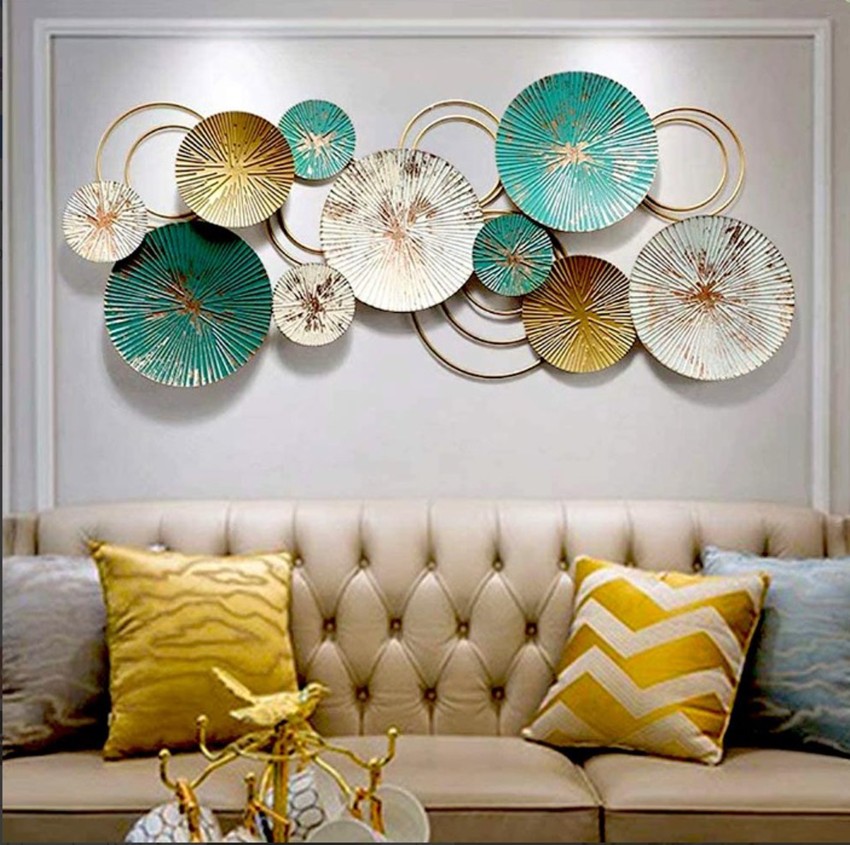Introduction to Wall Hangings
Wall hangings are an essential aspect of interior decor that can dramatically alter the ambiance of a room. As someone who has experimented with various styles, I can attest to their power in personalizing spaces and making them feel complete. In this article, we will explore the different types of wall hangings, their benefits, and how to effectively incorporate them into your home. So, let’s dive into the world of wall art and decoration!
The Different Types of Wall Hangings
1. Art Prints and Paintings
Art prints and paintings are timeless wall hangings. Whether you prefer classic masterpieces or modern abstracts, the right piece can set the tone for your entire room.
Pros and Cons
- Pros: Variety of styles, easy to change, can be an investment.
- Cons: Can be expensive, requires framing for protection.
2. Tapestries
Tapestries are fabric wall hangings that add texture and warmth. They come in an array of patterns and colors, making them a versatile choice for any decor style.

Pros and Cons
- Pros: Softens hard walls, adds insulation, unique designs.
- Cons: Can collect dust, may require special cleaning.
3. Wall Décor Made of Natural Materials
Natural materials such as wood, metal, and even stone are increasingly popular in wall decor. These materials can bring an organic feel to your home.

Examples
- Wooden signs or wall art
- Metal sculptures or wall hangings
- Stone or brick accents
Pros and Cons
- Pros: Durable, adds character, eco-friendly options available.
- Cons: Can be heavy, may require professional installation.

4. Mirrors
Mirrors are not just functional; they can also serve as stunning wall hangings that reflect light and visually enlarge your space.
Pros and Cons
- Pros: Enhances light, creates an illusion of space.
- Cons: Requires careful placement, can be expensive.

5. Gallery Walls
A gallery wall is a curated collection of various wall hangings and is a fantastic way to showcase your personality and experiences.
How to Create a Gallery Wall
- Select a theme or color palette.
- Mix frames and styles for visual interest.
- Plan the layout on the floor before hanging.

Pros and Cons
- Pros: Personalizes your space, allows creativity.
- Cons: Requires time to curate, can look cluttered if not done well.
The Benefits of Wall Hangings
Incorporating wall hangings into your home decor comes with numerous advantages:
- Adds Visual Interest: Wall hangings break up the monotony of empty walls and create focal points.
- Expresses Personal Style: Your choice of wall art reflects your personality and taste.
- Enhances Space: Colorful or textured hangings can uplift the mood of a space.
- Creates Dimension: Different materials and arrangements can add depth to a room.
- Improves Acoustics: Soft wall hangings, such as tapestries, can help absorb sound in large rooms.
How to Choose the Right Wall Hangings for Your Space
Selecting the appropriate wall hangings can be daunting. Here are some tips I’ve gathered through personal experience:
1. Consider Your Space
Evaluate the size and style of your room. In smaller spaces, opt for lighter, more minimalistic designs. In larger rooms, go bold!

2. Think About Color and Texture
Color plays a crucial role in setting a room’s mood. Choose wall hangings that complement your existing color scheme. Additionally, mixing textures can add depth.
3. Personal Connection
Choose pieces that resonate with you. Whether it’s meaningful art or a memorable photo, make sure it speaks to you personally.
4. Experiment with Placement
Don’t be afraid to try different arrangements and heights. Sometimes the best results come from unexpected placements.
Comparing Different Types of Wall Hangings
| Type | Material | Price Range | Maintenance | Ideal For |
|---|---|---|---|---|
| Art Prints | Paper or Canvas | $20 – $500+ | Occasional Dusting | Living Rooms, Bedrooms |
| Tapestries | Fabric | $30 – $300 | Spot Clean Recommended | Bohemian Styles |
| Wooden Wall Art | Wood | $40 – $800 | Polish Occasionally | Rustic or Vintage Decor |
| Mirrors | Glass and Frame | $50 – $1000+ | Wipe Clean with Glass Cleaner | Any Room Needing Light |
| Gallery Walls | Mixed Materials | Varies Widely | Regular Dusting | Personalized Spaces |
Practical Tips for Hanging Wall Decor
Properly hanging your wall decor is just as important as choosing it. Here are some tips:
1. Use the Right Tools
Invest in wall hooks, anchors, and picture-hanging tools to ensure that your wall hangings are secure and level.
2. Follow the 57-Inch Rule
The center of your wall decor should generally be 57 inches from the floor, which is the average eye level.
3. Group Hangings Wisely
If creating a gallery wall, maintain consistent spacing (2-4 inches) between pieces to unify the look.
Frequently Asked Questions (FAQs)
What materials are best for wall hangings?
There is a wide variety of materials to choose from, including canvas, wood, metal, fabric, and glass. The best choice depends on your style preference and room decor.
How do I create a gallery wall?
Start by selecting a theme or color palette, lay out the designs on the floor, and test different arrangements before hanging them on the wall.
Can wall hangings improve acoustics?
Yes, soft materials like tapestries can help absorb sound and improve acoustics in larger spaces.
What’s the best height to hang wall art?
The center of the artwork should ideally be at eye level, about 57 inches from the floor.
How often should I change my wall decor?
There’s no set rule! Changing wall decor seasonally or when you feel it’s time for a refresh can keep your space feeling new and engaging.